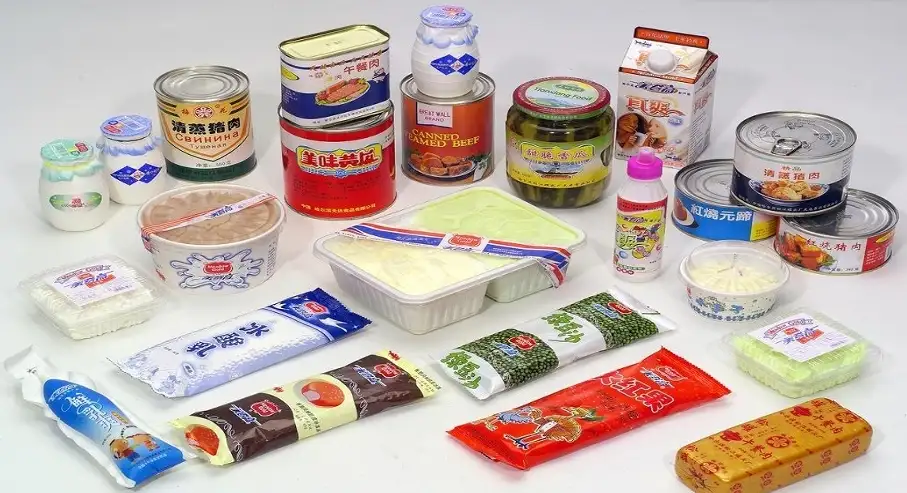In daily life, food additives are widely used, providing us with more high-quality food choices. In the appropriate range, the use of food additives brings more convenience to life. Sodium Pyrophosphate(STPP) is a common food additive that can be found in many food ingredients. So, can Sodium Pyrophosphate be used as a food additive?
STPP, also known as sodium phosphate, has two forms: water or ten water objects. The ten water is colorless or white crystal or crystalline powder, while the aquatic object is white powder, which can be dissolved in water, but insoluble in ethanol and other organic solvents. STPP has a powerful metal ion complexation ability. The aqueous solution is relatively stable below 70 ° C.
Among the food industry, sodium polarized sodium phosphate, STPP, sodium trimer phosphate, etc. are used as food quality improved agents and have played a variety of functions such as PH regulation, metal ion chelating, emulsification dispersing, and adhesion. STPP is also divided into industrial and food grades. Food -grade Sodium Pyrophosphate supplied by Goway Chemical has food additive production licenses and is safe for food production.
Food-grade Sodium Pyrophosphate is a white powder, which can be melted in water and is often used as a stable agent and buffer. During the production of soy sauce and juice, food-grade STPP can improve the color of the product and make it more bright.
In addition, STPP also has the function of softening water, which can dissolve calcium and magnesium insoluble salts. In the processing of meat and aquatic products, the addition of STPP can improve water holdings, make the meat more tender, stable natural pigment, and prevent fat corruption. In addition, it is often used in food processing such as yeast and cheese manufacturing.
In food processing, food-grade Sodium Pyrophosphate is usually added to a ratio of 0.5-3 ‰, and the maximum increase in aquatic products is generally 3%.
FAQ: STPP as a Food Additive
-
What is the primary function of STPP in food products?
- Sodium Pyrophosphate serves as a quality improver, providing functions such as pH regulation, metal ion chelating, emulsification, and stabilization in food products.
-
In what forms does Sodium Pyrophosphate exist, and how is it used in the food industry?
- It comes in both decahydrate (colorless or white crystals) and anhydrous (white powder) forms, commonly used as a dissolved substance in water for various food processing applications.
-
Why is STPP important in food processing?
- It is crucial for improving product color, water retention, tenderizing meat, stabilizing natural pigments, and preventing fat oxidation, among other benefits.
-
Is STPP safe for consumption, and are there any regulations governing its use?
- Yes, food-grade Sodium Pyrophosphate is safe for consumption and is regulated to ensure it meets food safety standards. It is provided with a food additive production license.
-
How is Sodium Pyrophosphate used in meat and aquatic product processing?
- It softens water by dissolving calcium and magnesium insoluble salts, improves water retention to make meat more tender, stabilizes natural pigments, and prevents fat from oxidizing.
-
What is the typical usage ratio of Sodium Pyrophosphate in food products?
- The typical usage ratio ranges from 0.5 to 3‰, with the maximum increase up to 3% in aquatic products.
-
Is STPP used in any other food products besides meat and aquatic products?
- Yes, it is also commonly used in products like soy sauce, juice, yeast, and cheese manufacturing to enhance quality and extend shelf life.
-
How does STPP affect the color and clarity of foods?
- Food-grade Sodium Pyrophosphate can improve the color of products, making them brighter and more appealing, and it can also prevent discoloration in certain foods.
-
Can the use of Sodium Pyrophosphate have any impact on the nutritional content of foods?
- While Sodium Pyrophosphate does not directly affect nutritional content, its use can help maintain freshness and quality, indirectly supporting the overall nutritional value of food products.
-
Are there any dietary restrictions or concerns associated with the consumption of foods containing Sodium Pyrophosphate?
- For most consumers, Sodium Pyrophosphate is safe. However, individuals with specific dietary restrictions or health concerns should consult with healthcare providers regarding the consumption of foods containing this additive.

